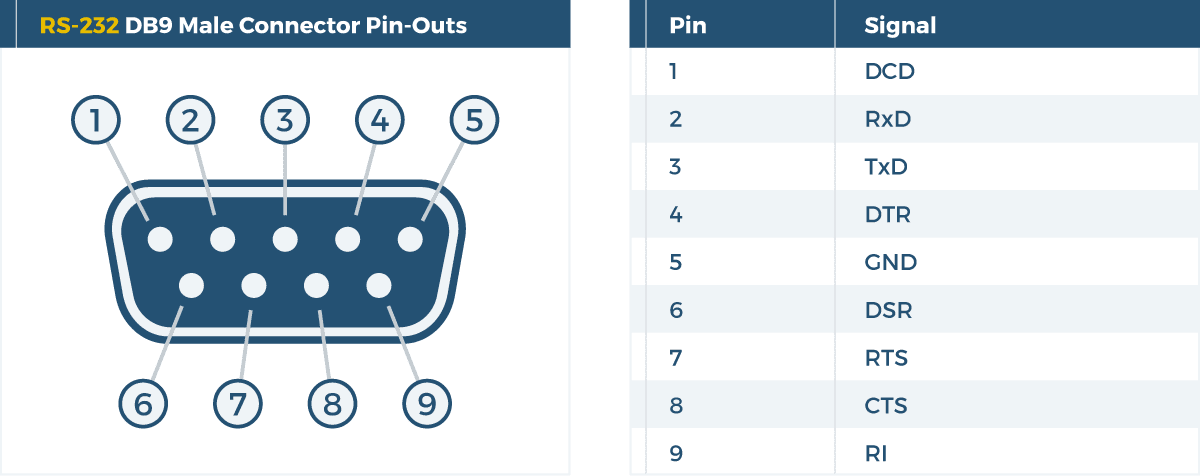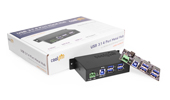RS232 is probably one of the most impressively long-lived and enduring communication standards, and the oldest widely implemented of the serial data communication standards. Personal computers can still be found with RS232 ports, even as the Universal Serial Bus, aka the USB, has grown in popularity to become almost the only communication port most people use today on a daily basis.
But this is not the case for many engineers and technicians working in industrial settings with industrial electronics, manufacturing lines, robotics, and measurement tools and networks. Serial communication is still a vital part of their communications networks going on nearly 60 years now. Truly an enduring and successful technology.
This incredible longevity has created a market for converters that integrate serial communication devices into new technologies, particularly USB. This market for devices that interface between new technologies and communication protocols and the serial commutation standards of RS232, RS422, and RS485, is not as easy to navigate as it may at first seem, given the variance in quality of converters.
The RS232 Port
The most common RS232 port is configured with a 25-pin (DB-25) connection. DB-25 is in the D-subminiature connector socket category of computer and communication device connections. This is the probably somewhat familiar arrangement of two rows that you have seen before on older devices or industrial printers and older computers: a 13 pin row above a 12 pin row port. Usually, the majority of the pins are not actually utilized today on the larger 25-pin configuration. A 9-pin or DB-9 connector will do the job most of the time.
The standard is set to a maximum distance that is flexible in terms of reach depending on the cables used. The recommended maxim is 50 feet. The signal is subject to degradation and electrical noise otherwise, and especially in noisy industrial environments where these protocols are mostly used these days.
However, that distance can be stretched significantly. With a well-shielded cable, RS232 can reach distances of 10,000 feet. These longer distances will require much slower speeds of data transmission, though, about 19,200 bps.
The 9-Pin Port & 3-Wire Cable
The DB-9 connection, as stated, is suitable for the majority of serial data communications. The important component is the three-wire configuration of the RS232 cable that transfers data one bit at a time:
 You can always refer to our pin-out diagram for the DB9 as featured above. For more reliable data communication, sometimes additional transmitting wires are incorporated.
You can always refer to our pin-out diagram for the DB9 as featured above. For more reliable data communication, sometimes additional transmitting wires are incorporated.
RS232 are asynchronous communicators. They don’t synchronize bits sent or received. The serial implements start/stop bits that are sent within the data stream, and these signal that data transmission is about to begin or about to end. This occurs on a bit-by-bit basis. Parity bits may also be implemented, improving data integrity and checking for any errors, and this applies exclusively to RS232 communications.
Synchronous communications employ continuous streams of bits, allowing two devices to stay in constant communication about what the other device is doing and will even use idle bits that don’t have actual information or data that is to be transmitted. A common example would be a parallel printer port on a PC, which stays in constant communication between both devices.
The Uses of RS232 Pins
DTE: Data Terminal Equipment
DCE: Data Communication Equipment
The DTE, Data Terminal Equipment (commonly a PC) that is connected to a DCE, Data Communications Equipment (such as a modem) is the scenario and technical situation that an RS232 communications adapter will exist within. It’s important to understand when configuring your setup which is DTE and which is DCE. DTE to DTE or a DCE to DCE connection requires a special cable. A DTE to DCE uses straight-through cables.
The DTE (Data Terminal Equipment) will perceive the transmit data pin or TD pin. The TD pin is how data is sent, and the receive data pin, or RD pin, is how data is collected. The DCE does receive data on its TD pin though when a straight-through cable is utilized.
Other important data pins used by RS232 serial connections are:
· RTS: Request To Send
· CTS: Clear To Send
· DTR: Data Terminal Ready
· DSR: Data Set Ready
· CD: Carrier Detect
· RI: Ring In
RTS, Carrier Detect, and RI, Ring In, pins are both used infrequently on modems made today. When hardware flow control is happening between the DTE device and the DCE device, RTS and CTS pins are important. In combination, they prime the appropriate pin to receive data, for example.
Though relatively simple to use, serial data communication has nuances that can be overlooked if one does not employ high-quality networking practices and devices. Visit www.coolgear.com to learn more about our high-quality RS232 serial devices and converters. We have pin-out diagrams, which give you a visual and show the purpose of each pin, for all of our serial cables/adapters and our team is happy to break it down for you and help you find the exact configuration you need.



















